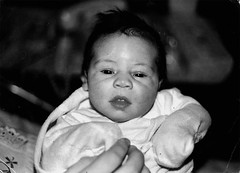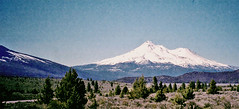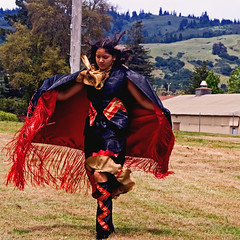Approaching Linton Church
(photo taken by Beth Kotkin 9/2004)
"He who is tired of Linton is tired of life”
-ancient saying from the Scottish Borders.
The church at Linton in the Scottish Borders is the oldest surviving building used for continuous Christian worship in the Borders area. Before the Normans arrived (and my ancient ancestors with them), it was the site of Celtic Christian worship for many hundreds of years. Records of the Linton Church date back to 1127 and before. Some say St Cuthbert himself established the church here not long after going to Old Melrose in 651 to become a monk in the Celtic Christian tradition.
My ancient Somerville ancestors were laid to rest here for almost a thousand years in the churchyard of this tiny Norman Church.
I took this shot of the side view of the doorway where the Somerville Stone has survived for over 800 years. It celebrates the legend still told in the Borders area (which is the origin story of my family line in Scotland) of one John Somerville, dragon-slayer, who won the lands and barony of the Linton area in reward for his great deed.
I will be posting about the dragon-slayer here in due time.
For now, I will share an excerpt about this same John Somerville, from later in his life, from the book, "The Memorie of the Somervilles". "The Memorie of the Somervilles" was written by Baron James Somerville in 1679. In writing this book, he preserved the oral traditions and stories passed down for 25 generations from Sir Gualter de Somerville who came with William the Conquerer from Normandy in 1066 with the Norman Conquest of England.
The book was later edited and widely published by Sir Walter Scott in 1814, who had heard these family stories when staying with his (Somerville) grandmother in the Borders during his childhood summers at the family home.
The contents of this book have been a most valuable resource for tracing the legends, stories and genealogy of my most ancient ancestors in Scotland. Just recently, I was able to find a copy published on the web that is now in my possession (thanks to the University of Wisconsin, my alma mater, for scanning this and making it freely available to download). And it is why I started this blog, to share the pictures and stories that I have been uncovering for the past 5 years, since my mother's death.
The following excerpt is about John Somerville of Scotland (the legendary dragon-slayer) and his father, Rodger Somerville of England. It relates some of what ensued after Rodger joined in the Magna Carta Rebellion against England's King John in 1213. As a result, he lost his lands, and sought refuge with his son in Linton:
"His father, Rodger, "adhered to the rebellious barons about the latter end of King John his reigne" (1213) His Manor of Stocton in the County of Wear (Zear) was given to Henry Deedaly. Rodger fled to Scotland to his son John's house at Lintoune. He was able to see his two eldest grandsons, Robert & William, and died 1214 at 94 years; buried at Lintoune Church. Robert & William are both 7th generation from Gualter de Somerville, who came with the Conqueror."





